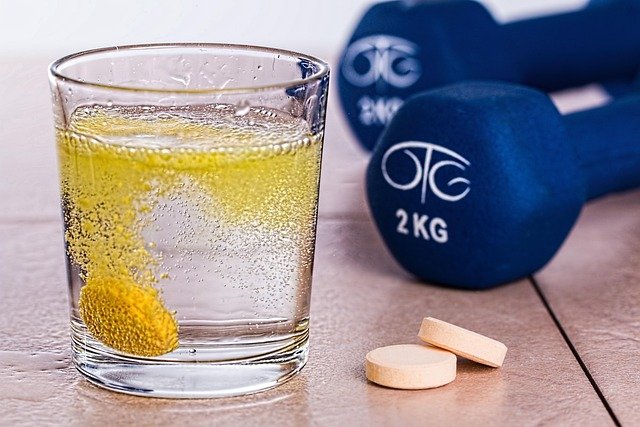Nutrient strategies that support skin health and muscle recovery
Maintaining healthy skin and efficient muscle recovery depends on more than topical care and workouts. Thoughtful nutrient strategies — balanced macronutrients, targeted micronutrients, consistent hydration, and sleep-friendly routines — play a foundational role in supporting circulation, collagen production, and resilience. This overview outlines practical dietary choices and daily habits that help sustain both skincare and physical performance.

This article is for informational purposes only and should not be considered medical advice. Please consult a qualified healthcare professional for personalized guidance and treatment.
How does nutrition affect skincare and circulation?
Dietary patterns influence skin appearance and blood flow. A diet with adequate protein, healthy fats, and a spectrum of vitamins and minerals supports cell turnover, barrier function, and microcirculation. Omega-3 fatty acids and monounsaturated fats help maintain skin lipid layers and may reduce inflammation, while vitamin C and iron support capillary health and oxygen delivery. Prioritizing whole foods — vegetables, fruits, legumes, nuts, lean proteins, and whole grains — encourages stable blood sugar and steady circulation, which benefits both complexion and muscle nutrient delivery during recovery.
What role does collagen play in skin resilience?
Collagen is a structural protein important for skin strength and elasticity, and it also contributes to connective tissue repair in muscles and tendons. Nutrient strategies that support collagen synthesis include adequate protein intake and specific cofactors: vitamin C is essential for collagen cross-linking, while zinc and copper support collagen formation and repair. Consuming a mix of amino acid sources (e.g., poultry, fish, dairy, legumes) plus vitamin C–rich produce can help maintain collagen production. Lifestyle factors such as sun protection and avoiding smoking also preserve collagen integrity and overall skin resilience.
How does hydration support recovery and endurance?
Hydration affects skin turgor, circulation, and exercise performance. Water assists nutrient transport, thermoregulation, and joint lubrication, all important for endurance and post-exercise recovery. Electrolytes—sodium, potassium, magnesium—help maintain fluid balance and muscle function; include electrolyte-rich foods like bananas, leafy greens, and milk or consider a targeted beverage around prolonged training sessions. For skincare, consistent hydration supports barrier function, though topical moisturizers and occlusives also play a role. Aim for regular water intake throughout the day and adjust for activity, climate, and individual needs.
How do mobility and flexibility aid posture and strength?
Mobility and flexibility complement strength by enabling safer movement patterns and improved posture. Nutritional support for connective tissue health — sufficient protein, collagen-supporting micronutrients, and anti-inflammatory phytonutrients — can aid the tissues involved in mobility work. Adequate calories and carbohydrate when training support performance and recovery, while micronutrients such as vitamin D and calcium support musculoskeletal function. Combining mobility drills, flexibility work, and strength training within a balanced routine helps reduce injury risk and supports circulation, which in turn promotes tissue repair.
How does sleep and routine influence grooming and recovery?
Sleep is a critical recovery window when tissue repair, hormonal regulation, and skin renewal occur. Poor sleep architecture can impair muscle protein synthesis and accelerate skin aging. Nutritional choices that support sleep and recovery include evening meals that balance complex carbohydrates with protein, and avoidance of stimulants close to bedtime. Establishing a consistent grooming and sleep routine—light exposure management, comfortable sleep environment, and post-exercise cooldown with appropriate nutrition—supports circadian rhythms, enhances recovery efficiency, and contributes to long-term skin and muscle health.
Building a nutrition plan for circulation and recovery
A practical plan balances macronutrients to support training demands and skin health: prioritize protein intake spaced through the day for muscle repair, include healthy fats for inflammation modulation and skin barrier support, and ensure carbohydrate around workouts to fuel performance. Include foods rich in antioxidants and micronutrients that support circulation and collagen—citrus, berries, leafy greens, nuts, oily fish, and lean meats. Regular meals, hydration, and small adjustments for training intensity help maintain endurance and recovery. Tailor portion sizes and timing to individual goals and consult a professional for personalized plans.
Conclusion
Nutrition and daily habits form an integrated platform for both skin health and muscle recovery. Emphasizing protein, collagen-supporting micronutrients, healthy fats, hydration, and consistent sleep and routine improves circulation, resilience, and post-exercise repair. Combining dietary strategies with mobility work, strength training, and thoughtful grooming practices creates a sustainable approach that supports long-term skin integrity and functional fitness.





